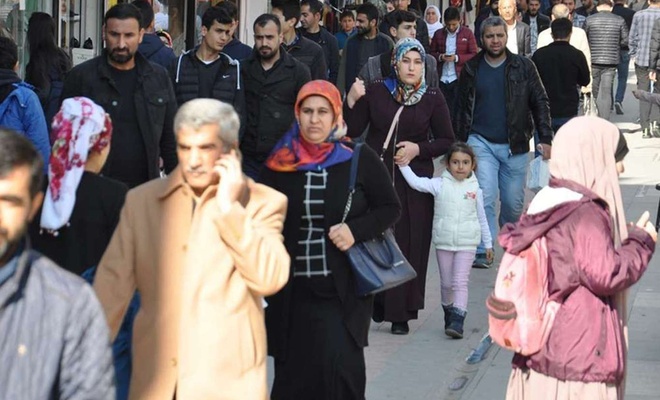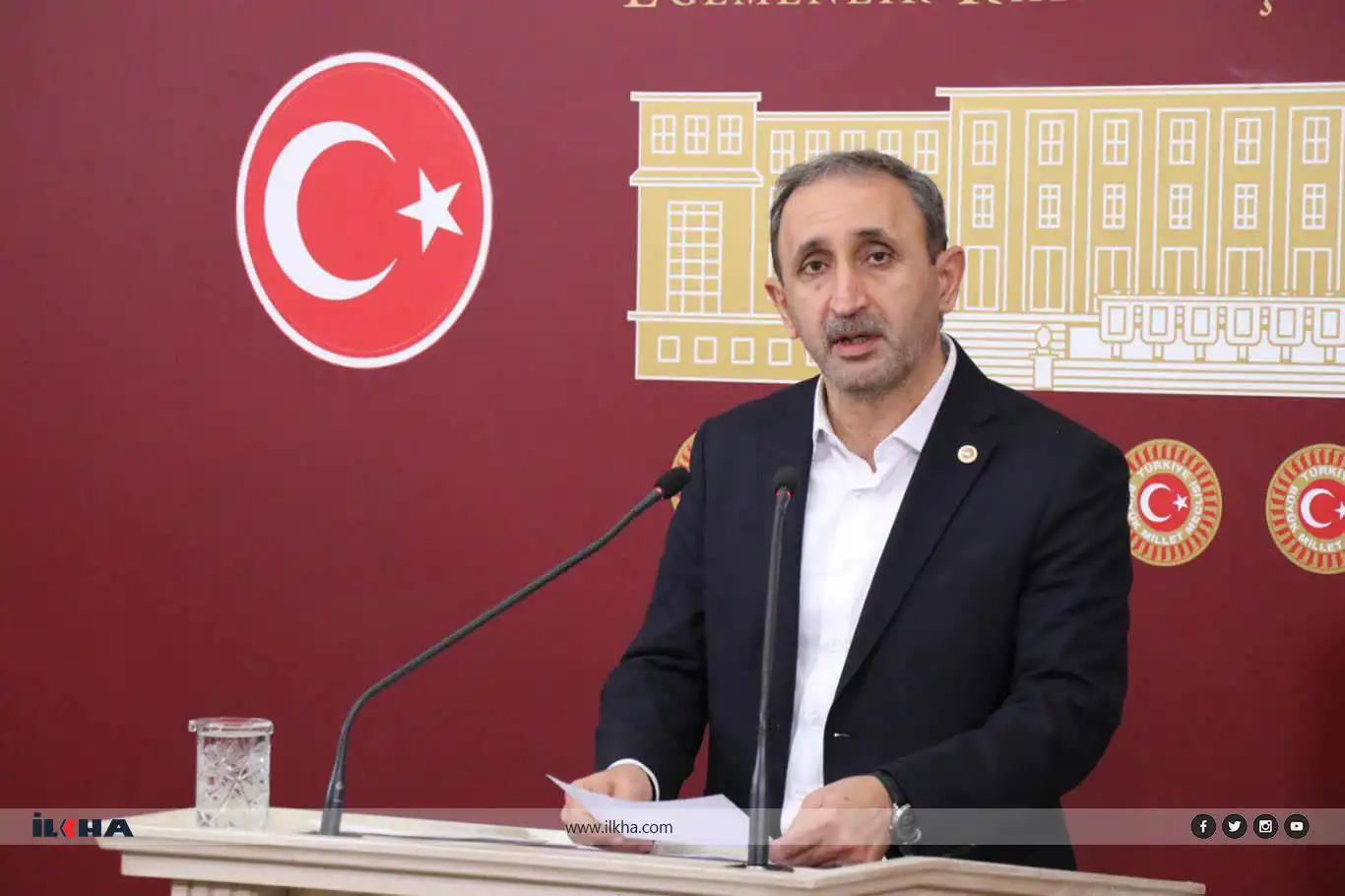Turkish statistical agency issues “Women in Statistics, 2021” survey
Females constituted 49.9% and males constituted 50.1% of the population of Turkey, according to the “Women in Statistics, 2021” survey released by the country’s statistical agency (TurkStat) on Friday.

 Google News'te Doğruhaber'e abone olun.
Google News'te Doğruhaber'e abone olun. According to the results of the Address Based Population Registration System; while the female population was 42 million 252 thousand 172 persons, the male population was 42 million 428 thousand 101 persons in 2021. In other words, females constituted 49.9% and males constituted 50.1% of the total population.
This proportional balance between females and males has changed in favor of females as from the age group of 60 and over due to the longer lives of females. While the proportion of the female population was 52.3% in 60-74 age group, it was 73.2% in the 90 and over age group.
The proportion of females completing at least one educational level was 87.7%
According to the National Education Statistics Database results; between the years of 2008 and 2020, it was observed that the proportion of those aged 25 and over and completed at least one level of education in total population has increased over the years. The proportion of individuals aged 25 and over and completed at least one level of education within the total population was 81.1% in 2008 and 92.9% in 2020. When the proportion of those who completed at least one education level by sex was examined; this proportion was 72.6% for females and 89.8% for males in 2008 and it was 87.7% and 98.1% in 2020.
The proportion of the population aged 25 and over and who were at least university graduates, within the total population was 9.8% in 2008 and 22.1% in 2020. When this proportion was analyzed by sex; while it was 7.6% for females and 12.1% for males in 2008, this proportion was 19.9% for females and 24.4% for males in 2020.
Female employment rate was less than half of male's employment rate
According to the results of the household labour force survey; in 2020, the proportion of those who were 15 years of age and over and in employment was 42.8% in Turkey. This proportion was 26.3% for females and 59.8% for males.
The highest employment rate was realized in TR21 (Tekirdağ, Edirne, Kırklareli) region with 50.9% in 2020. As for the lowest employment rate was in TRC3 (Mardin, Batman, Şırnak, Siirt) region with 26.0%. While the highest female employment rate was in TR90 (Trabzon, Ordu, Giresun, Rize, Artvin, Gümüşhane) region with 34.7%, the highest male employment rate was in TR21 (Tekirdağ, Edirne, Kırklareli) region with 67.9%. The lowest employment rate was in TRC3 (Mardin, Batman, Şırnak, Siirt) region with 12.6% for females and 40.4% for males.
Labor force participation rate of higher education graduate women was 65.6%
According to the results of the household labour force survey; when labour force participation rate by education status was investigated, it was seen that as the education status of women increased, more women participate to labor force. The participation rate was 12.4% for illeterate women, 24.1% for women graduated less than high school, 29.9% for women graduated from high school, 37.0% for women graduated from vocational high school and 65.6% for women graduated from higher education.
The rate of women working part-time in employment was 19.5%
According to the results of household labor force survey; the proportion of part-time workers in employment was 12.4% in total in 2020, this proportion was 19.5% for females and 9.3% for males.
The employment rate of females aged 25-49 with children under age 3 living in the household was 25.2%
According to the results of the household labor force survey; while the employment rate of individuals in the 25-49 age group living in households with children under age 3 was 59.8% in 2014, it was 56.8% in 2020. When this rate was analyzed by sex, it was 25.2% for females and 85.5% for males in 2020.
63.5% of the employed females was satisfied with the time spent for commuting time
According to the life satisfaction survey results, while the 61.9% of the employed people stated that they were satisfied with the time spent for commuting time, this proportion was 63.5% for employed females and 61.3% for employed males in 2021.
The proportion of female ambassadors was 26.5%
According to the Ministry of Foreign Affairs; While the proportion of females ambassadors was 11.9% in 2011, this proportion was 26.5% in 2021. While the proportion of male ambassadors was 88.1% in 2011, this proportion was observed as 73.5% in 2021.
The proportion of female deputy was 17.4%
According to the Grand National Assembly of Turkey data; among the 582 deputies, it was seen that the number of female deputies was 101 and the number of male deputies was 481 by the end of the year 2021. While the proportion of females deputies entering the parliament was 9.1% in 2007, this proportion was 17.4% in 2021.
The proportion of female professors among the professors working in higher education was 32.4%
According to higher education statistics; while the proportion of female professors was 27.6% in the educational year of 2010/'11, it was 32.4% in the educational year of 2020/'21. The proportion of females who work in associate professor staff was 40.1%, the proportion of females who work in instructor staff was 50.6%.
The proportion of females in management position was 19.3%
According to the results of household labor force survey; the proportion of females in upper and middle level management position in the companies was 14.4% in 2012 and 19.3% in 2020.
Mean age at first marriage was 25.4 for females and 28.1 for males
According to the marriage statistics; while the mean marriage age of females who officially made their first marriage in 2021 was 25.4, it was 28.1 for males. The province with the highest age at first marriage was Tunceli with 28.9 age for females and 31.6 age for males. The provinces with the lowest age at first marriage were Ağrı with 22.5 age for females and Şanlıurfa with 26.1 age for males.
It was seen that 15.4% of females had higher education level than their spouses
According to the results of the ABPRS; when the educational difference between spouses was examined in official marriages; it was seen that 39.8% of females were married with the males that had higher educational level than them, while the proportion of females who had higher educational level than their spouses was 15.4% in 2020. While the proportion of spouses with the same educational levels was 43.0%, the proportion of spouses with unknown education levels differences was 1.7%.
It was seen that 25.8% of women and 38.7% of men who divorced in the first 5 years of marriage were in the 30-39 age group
According to the divorce statistics; when the proportion of divorces are analyzed by the duration of marriage, 33.6% of divorces occurred in the first five years of marriage and 20.9% of divorces occurred in the 6-10 years of marriage in 2021. It was seen that 25.8% of women and 38.7% of men who divorced in the first 5 years of marriage were in the 30-39 age group.
The proportion of women who use Internet was 77.5%
According to information and communication technology usage survey by households and individuals results; the proportion of individuals at the age group of 16-74 using the Internet was 82.6% in 2021. This proportion was 77.5% for females and 87.7% for males.
The proportion of females who ordering or purchasing products online was 40.3%
According to the information and communication technology usage survey on households and individuals results; The proportion of individuals aged 16-74 who ordered or purchased goods or services for personal use over the Internet was 44.3% in the twelve-month period covering April 2020 and March 2021. The proportion of ordering or purchasing goods or services over the Internet by sex was 40.3% for females and 48.3% for males.
35.5% females felt insecure when they were walking alone at night in their own neighborhood
According to life satisfaction survey results; while the proportion of the individuals who felt insecure when they were walking alone at night in their own neighborhood was 25.0% total, this proportion was 35.5% for females and 14.2% for males in 2021. 48.1% of females and 70.9% of males felt themselves secure in their own neighborhood.
The proportion of the individuals who felt insecure when they were alone at home was 6.6% in total, this proportion was 9.1% for females, 4.0% for males. 78.1% of females, 87.3% of males felt themselves secure when they were alone at home in 2021. (ILKHA)



















































